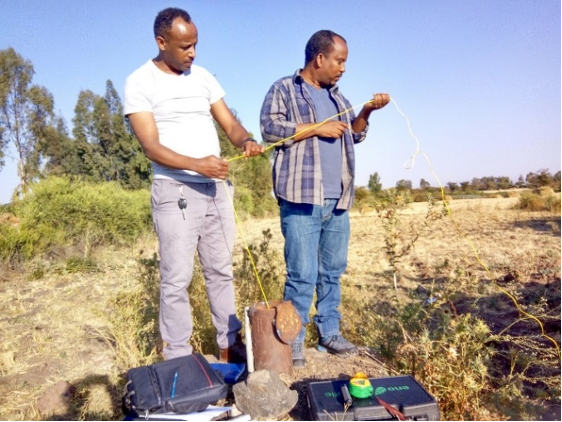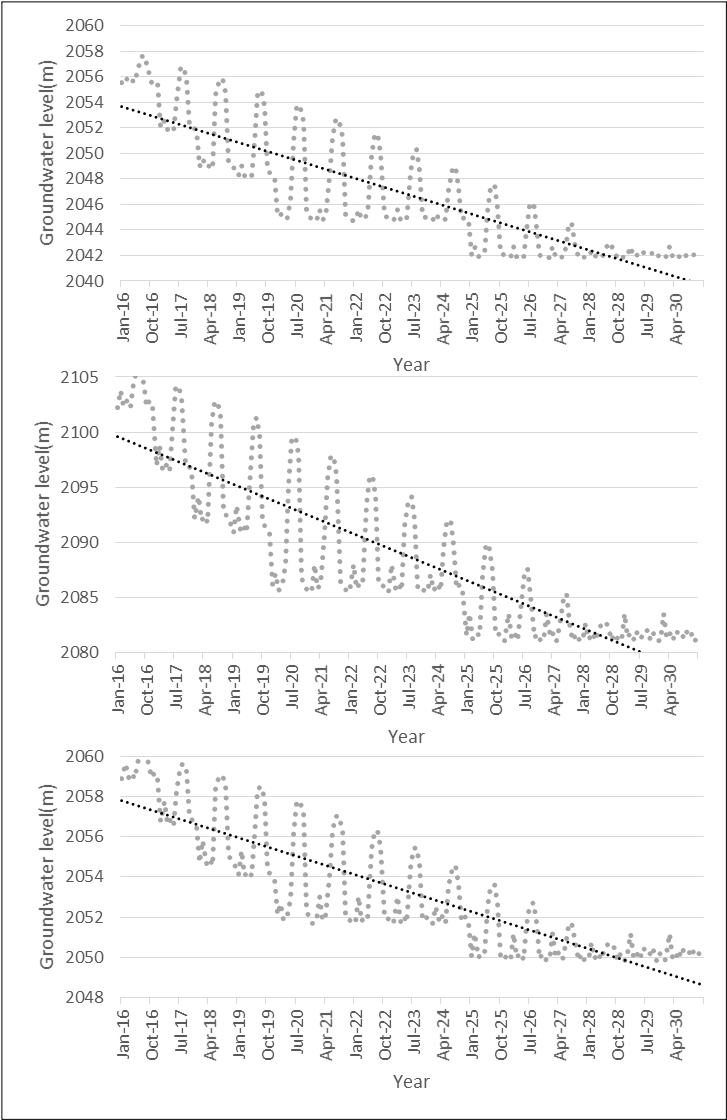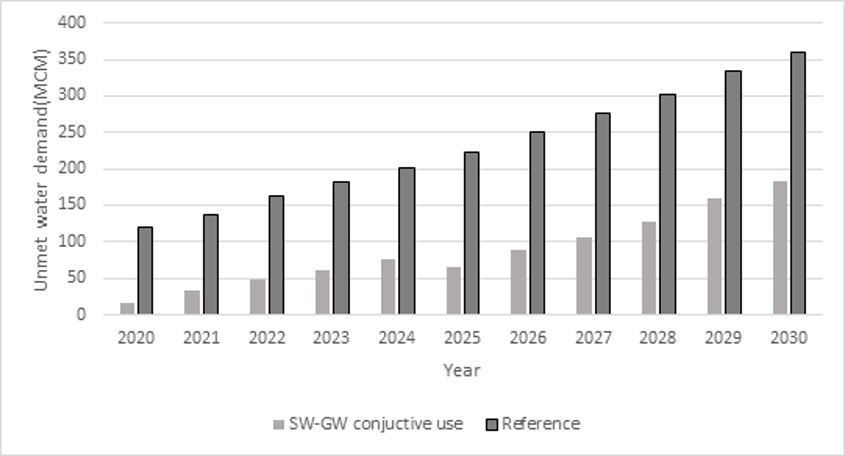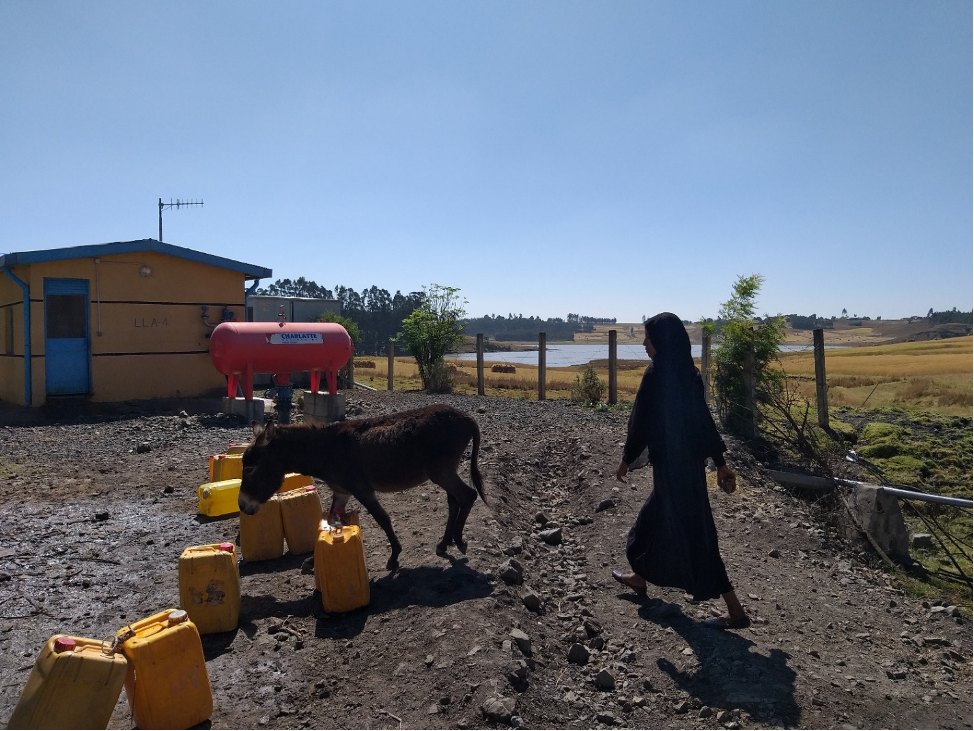Dr. Behailu Birhanu, Addis Ababa Science and Technology University
This blog is based on the groundwater management research led by Dr. Behailu Birhanu as part of REACH’s work in the Awash River basin. You can read the latest journal article published in Frontiers in Earth Science Hydrosphere here. In March 2021, the African Academy of Science (AAS) selected Dr. Behailu as one of 40 emerging scientists from the continent who demonstrate excellence in their work.
Groundwater is the primary source of drinking water for more than half of the world’s population. As is true for most countries in sub-Saharan Africa, the important role and contribution of groundwater in water-centered development has not historically been recognized in Ethiopia (MoWR, 2013). So far, groundwater has been mainly utilized for drinking water supply, with coverage increasing nationally from 23% in 2005 to 56% in 2015. But schemes for groundwater-based irrigation from shallow and deep aquifers are currently in development. As a result of population growth and the planned increase in groundwater abstraction for irrigation, groundwater use in African is projected to increase in the next few decades. This is also accompanied by a national recognition that the scope for groundwater use in Ethiopia, is larger than previously assumed, and the current knowledge is evolving (MoWR, 2013).
However, the current accelerating development of groundwater resources threatens sustainability. Despite the growing recognition of the benefits of groundwater resources, they remain poorly monitored and managed in many places. This has particularly impacted urban areas that rely on groundwater for drinking water supply. Aquifer depletion has increasingly affected water service delivery in large urban areas of Ethiopia. In Mekelle, increasing demand from a growing population has significantly reduced the water table. A similar situation can be found in Axum, Harar, and Gondar towns.
Climate change and seasonal variability are likely to increase uncertainty and further complicate groundwater resource management. Unaccounted water (water loss) due to leakage from poor water supply distribution networks and lack of sufficient electric power supply infrastructure is an additional challenge, especially for the urban settlements. With municipal authorities prioritizing immediate and short-term demands, sustainable groundwater management through proper resource monitoring schemes has never been the preferred alternative.
This leaves us to question:
- How can groundwater improve water security without facing risks of depletion?
- How much of the groundwater resource can be used sustainably in other development sectors such as irrigated agriculture?
- How are anthropogenic and natural stresses such as abstraction, population growth, climate change, and variability impacting groundwater resources?

Integrated use of surface and groundwater: a promising option to improve water security and reduce stresses on groundwater resources.
Our work as part of the REACH groundwater management research is seeking to evaluate the impacts of population growth, water leakage, and the expansion of surface and groundwater supply schemes on groundwater resources of the Awash River basin, under changing climate conditions.
The WEAP-MODFLOW linked model was configured for the upper Awash sub-basin where Addis Ababa is located. The surface-groundwater integrated tool was used to promote the integrated use of surface and groundwater, towards improving the urban water supply security for Addis Ababa. We show that the continuous groundwater abstractions in hot spot areas like Addis Ababa, will irreversibly damage the groundwater asset in the basin, unless sustainable management interventions are introduced through integrated use of surface and groundwater resources.
An estimated 6 million people live in the upper Awash sub-basin, the majority living in the capital of Addis Ababa. It hosts more than 60% of national industries, and significant agricultural investments, including an estimated 8 million livestock. The upper Awash sub-basin is one of the most important sources of water supply in Ethiopia. Both surface and groundwater have contributed and continue to contribute to Addis Ababa’s water supply. Until recently surface water reservoirs have been the dominant supply, with groundwater supply increasing from 20 to 67% in the past 15 years.
Given the current population growth, and the existing water supply infrastructure, Addis Ababa’s unmet domestic water demand is estimated to increase by up to 760 million cubic meters by 2030. Water leakage through poor water supply distribution networks contributes about 23% of the unmet water demand in the city. Climate change is projected to exacerbate the situation.
If the current groundwater abstraction trends are maintained for Addis Ababa’s water supply, groundwater levels could decline by more than 20m in some areas (Figure 1). The best water supply management option to improve urban water security for Addis Ababa and protect its groundwater resources, is the integrated use of surface and groundwater resources. However, because the existing surface water reservoirs (Gefersa, Legedadi-Dire) have limited storage capacity, the hope for Addis Ababa’s water supply security lays on the surface water reservoirs (Gerbi and Sibilu). These reservoirs are planned to be developed by the government, together with the deep groundwater supply sources.

Despite the projected increase in temperature and low precipitation, we find that the integrated use of water resulted in a significant increase in domestic water coverage, from 26% for the reference condition to 90% in 2030, with minimum effect on the groundwater resources.
Successful examples of integrated use of surface and groundwater in developing cities include Lima in Peru and Bangkok in Thailand.

Emphasis should also be given to minimize the considerable amount of water loss from the poor water supply distribution networks. Investment in monitoring infrastructure to understand how the groundwater might respond to the changing stresses (abstraction, climate change) should always be the priority.
References:
Birhanu B, Kebede S, Charles K, Taye M, Atlaw A and Birhane M. (2021) Impact of Natural and Anthropogenic Stresses on Surface and Groundwater Supply Sources of the Upper Awash Sub-Basin, Central Ethiopia. Front. Earth Sci. 9:656726. doi: 10.3389/feart.2021.656726
Ministry of Water and Energy (MoWE) Report (2013) Supplement to task force report on aquifer management for Addis Abeba and vicinity. Updated version. Strategic Framework for Managed Groundwater Development (SFMGD) Task Force.

